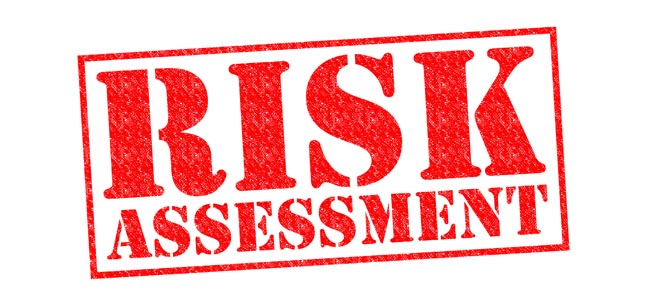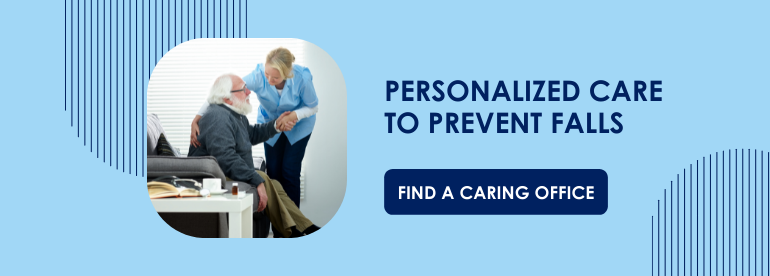According to the CDC senior falls are devastating, deadly, costly and preventable. Therefore, to maintain health and independence of your senior loved one, it is important to conduct a fall risk assessment. Here are rather important things to know when you are considering potential fall risks in any environment.
Why Perform a Fall Risk Assessment?
There are many reasons to perform a fall risk assessment for your loved one. The primary reason is to keep them safe. However, here are some risks associated with falls for you to consider.
Devastating
Senior falls are often devastating to the senior and their loved one. The CDC reports that 1 in 10 senior falls result in a serious injury that requires hospitalization. In many cases these seniors never regain the independence they lost.
Deadly
Falls are the leading cause of injury death for seniors. Unfortunately as a person ages they have a more difficult time recovering from injury especially a serious injury. Those with a broken hip may end up getting pneumonia. Sometimes the fall causes a head injury that is fatal.
Costly
Regardless of how serious of an injury occurs medical bills will result. If a long hospitalization is required followed by physical therapy the mounting hospital bills will be overwhelming.
Regret
In many cases people feel regret after a senior fall because they realize the fall was preventable. That is where the risk assessment comes in. If it is done BEFORE a fall occurs, action can be taken to reduce the change of a fall actually happening.
How Does A Risk Assessment Reduce Fall Risk?
A fall risk assessment will determine how likely it is that a senior will fall and the cause of the fall might be. This knowledge can be used to take steps to reduce the likelihood of the fall. Consider the following examples:
-
For a person with muscle weakness or balance issues an exercise program can make a difference. Some examples include Ta Chi or balance training.
-
A medication review can be completed to help determine if a fall is likely due to a side effect of medicine. Dizziness is a possible side effect that can cause a fall. It may be possible to make changes to the medicine being taken to reduce that risk.
-
A vision assessment may find vision loss that would increase the risk of a fall. Taking corrective action to improve vision can mitigate the risk.
-
Evaluating the safety of the living conditions can identify clutter or poor lighting conditions that make a fall more likely. Making modifications to the home can eliminate this issue.
Areas to Address in a Fall Risk Assessment
1. Prior Fall History
One third of adults over the age of 65 will experience a fall. Falls are costly and painful. Ultimately, one fall can increase the likelihood of subsequent falls. And if a senior has fallen, it is more likely for them to fall again. Having this knowledge, and knowledge of fall-related injuries, can help you assess fall risks.
2. Environment
Elderly adults may live alone, with a loved one, or in a facilitated environment. It is important to assess and correct, or modify risk factors such as clutter, uneven walk ways, stairs, lack of railings, slippery floors, etc.
3. Medication
Many prescription medications cause dizziness and confusion. These side effects are likely to cause a loss of balance, which increases the risk of a fall. Medication management is important to help seniors avoid falls.
4. Vision
As we age our vision slowly deteriorates. Due to the nature of this gradual process, determining the current level of risk is a challenge. Keep up with regular eye exams.
5. Mobility
As the body grows older mobility decreases. Walking devices help maintain independent mobility, yet they can also be awkward for the first time user. Mobility devices, such as canes, crutches and walkers, should fit properly to the user.
6. Lighting
Poor lighting is a risk factor in and of itself; however, the CDC states that two or more risk factors significantly increases the risk of a fall. Poor lighting easily complicates any one of the previously stated risk factors. Take action to reduce the risk.
7. Balance
Generally, the healthcare professional will conduct a vision assessment by watching the senior walk several feet. If she senior seems wobbly or shaking, she may be at risk. The doctor may ask the individual to rise from a seated position without using her hands for support. He may also ask her to balance on one foot. To help improve balance, here are some exercise ideas.
Senior falls are commonly preventable. Get more information about the dangers of falls in our Fall Prevention Fact Sheet. You can also schedule a free Home Safety Assessment with your local Caring office to evaluate fall hazards in your home.


